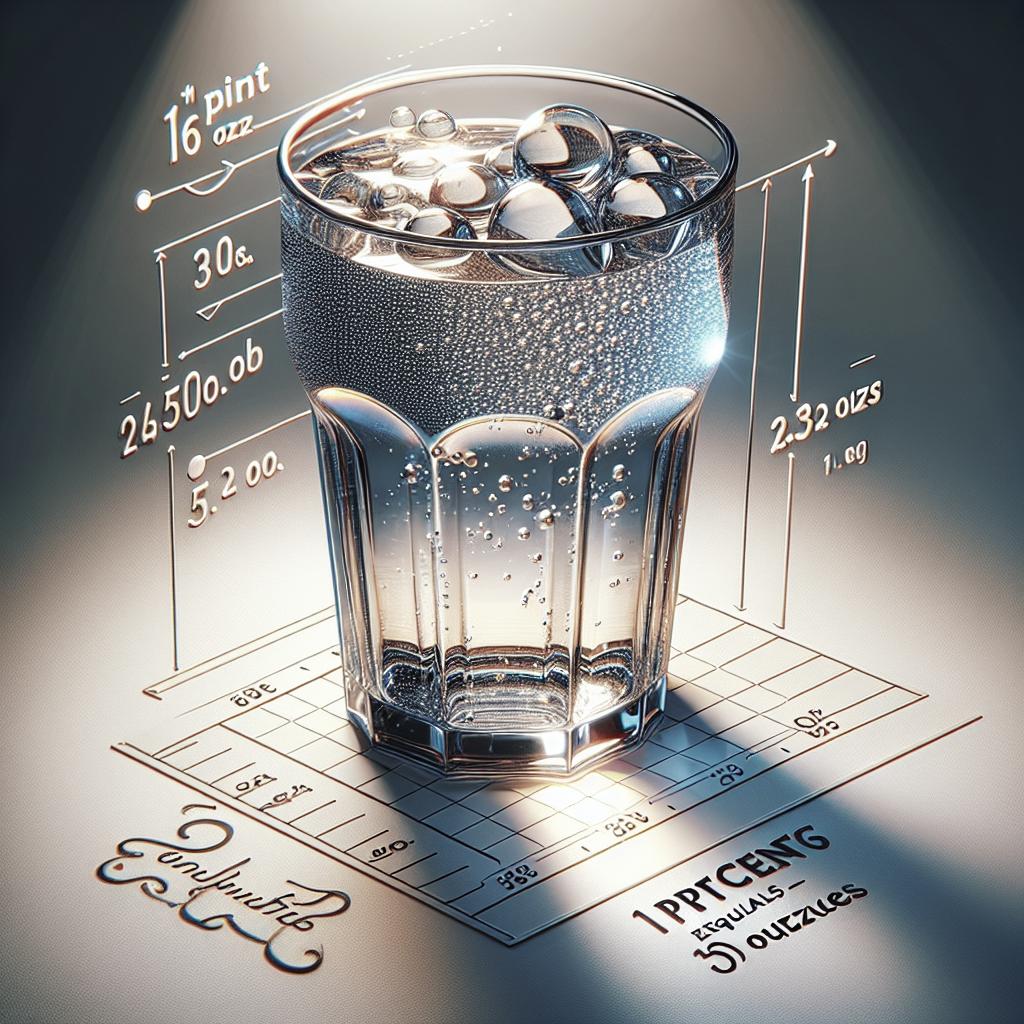When it comes to cooking or purchasing beverages, knowing the conversions between units of measurement is crucial for precision. In this guide, we’ll dive into the specifics of how many ounces are in a pint. This fundamental topic can remove the guesswork and improve accuracy, both in the kitchen and beyond. We’ll start by defining what an ounce and a pint are, explore international variations, and dig into the differences between wet and dry measurements. By the end, you’ll understand the concepts clearly—allowing for a seamless conversion process.
What is an ounce?
An ounce is a unit of weight that originated from the Roman system of measurement. One ounce is approximately 28.35 grams. It’s primarily used in the United States to measure smaller quantities, both by weight and volume. The term ounce comes from the Latin word “uncia,” which means a twelfth part—originally referring to a twelfth part of a Roman pound. In contemporary contexts, ounces are split into two categories: fluid ounces (fl oz) for measuring volume and dry ounces for measuring weight. This distinction is essential when converting measurements, as different ingredients or substances can significantly alter the resulting conversion if misinterpreted.
What is a pint?
A pint is another fundamental unit of volume often used in the United States. It roughly equals 473 milliliters. The term originates from the Old French word “pinte” and traces its roots back to the Latin “pincta,” which denotes markings on a container indicating volume. Traditionally used for liquids, pints are a common measure in recipes, brewing, and even certain dry goods. Globally, the pint varies in size. For example, an Imperial pint in the United Kingdom is about 568 milliliters. This disparity necessitates understanding the context and regional standards when making conversions. Whether you’re pouring a pint of milk or measuring grain, this difference can greatly impact accuracy.
Quick Conversions
Understanding pints in ounces is straightforward once you remember the rule: one US pint is equal to 16 US fluid ounces. This conversion is standard across most recipes and culinary guidelines in the United States. For instance, if you’re preparing a dish that requires 2 pints of liquid, you’re looking at using 32 fluid ounces. However, if you’re dealing with dry goods, note that one US dry pint equals approximately 18.6 dry ounces. The specifics can differ due to the density and packing of the dry substance you’re measuring, but this general figure provides a useful reference point.
Measuring an Ounce and Pint Internationally
Internationally, measurements can vary. In the United Kingdom, a pint equals 20 Imperial fluid ounces, approximately 568 milliliters, due to its larger ounce size. Watching for these differences is critical, especially when using recipes that originated outside your home country. In countries using the metric system, pints and ounces may be less commonly used, with liters and milliliters being the standard units for liquid volumes. One milliliter equals approximately 0.0338 U.S. fluid ounces, and a liter equates to about 35.2 U.S. fluid ounces.
Wet vs Dry Pint
A wet pint and a dry pint differ both in use and volume. A wet pint, commonly just called a pint, measures liquid volumes such as milk, beer, or water. Its exact volume is 16 fluid ounces in the United States, making it consistent and easy to use in everyday scenarios. Conversely, a dry pint measures dry substances like grains, berries, or flour. Its volume is slightly larger to account for air gaps and the less dense nature of those materials. The U.S. dry pint equates to roughly 1.163 US wet pints, or about 18.6 dry ounces.
Fluid Ounces (fl oz) vs Dry Ounces
Fluid ounces measure the volume of a liquid, while dry ounces measure the weight of a dry ingredient. Differentiating between the two is critical when converting measurements, as one ounce of a liquid (like water) occupies more volume than one ounce of a powder or granulate. Typically, fluid ounces are used for water-based measurements such as soup stock or milk, making them essential in recipes for proper consistency. In contrast, dry ounces are more common in baking and when dealing with ingredients like flour, sugar, or spices. The versatility demands understanding to ensure your measurements are accurate.
Future Prospects
Knowing how many ounces are in a pint can significantly enhance your culinary and daily activities. To further aid in your understanding, here is a summarizing table that delineates these conversions precisely: “`html
| Measurement | Ounces (US) |
|---|---|
| 1 US Liquid Pint | 16 US Fluid Ounces |
| 1 US Dry Pint | 18.6 Dry Ounces |
| 1 UK Pint | 20 UK Fluid Ounces |
| 1 Liter | 35.2 US Fluid Ounces |
“` By familiarizing yourself with these conversions, you can seamlessly navigate between recipes, international standards, and diverse culinary practices with confidence.


